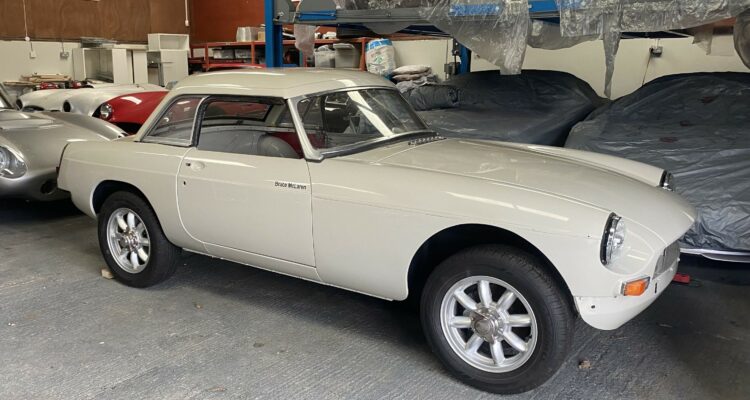The Opron Touch – Remembering an Automotive Legend
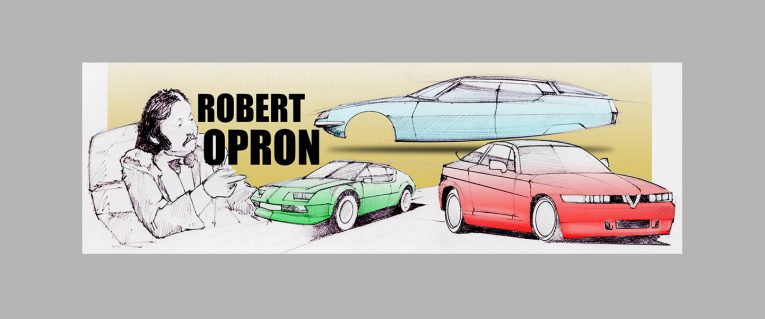
It’s not uncommon for Architects to make ideal Car Designers. Obviously, there’s a little more than just driving a Saab or dressing in mono-colour outfits though. Before a Rotring is even picked up, you’d need to consider social, economic and environmental consideration – in short learning from human behaviour and their interaction with their environment. Design, of course, is subjective. But communication is not. It’s the key part of any design process. A decent designer uses the skills of empathy, wants and needs as a mantra as the sketch becomes a design.
Background
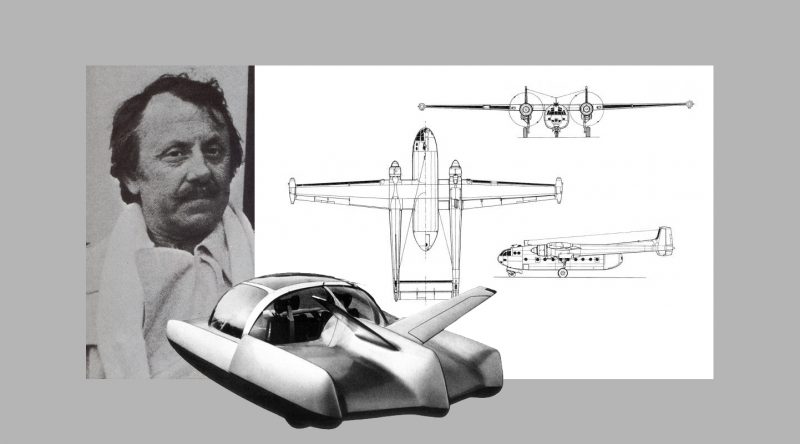
Robert Opron’s background in Architecture was only part of his influences, his background and experiences formed the man he became, and it came to shape his work. His formative years in Africa during the Second World War provided an appreciation of culture, colour and harmony. These skills should have been honed as he embarked on a formal design qualification but illness prevented this, yet thanks to his natural ability, he soon found himself working for Nord Noratlas, as a part of a team designing Aircraft cockpits.
However, it was an opportunity at Simca toward the end of the ’50s that helped Opron make his name. Simca catered to the French middle classes, their Fiat-derived cars were well-built but had a conservative approach to style. Opron was shown a copy of the popular ‘Le Journal de Tintin’ magazine which featured an opportunity to design a hypothetical one-off car for the year 1980. He was able to convince the Simca management that encouraging innovation and creativity could be a good way to promote the brand. He was given the green light to go ahead, but was still met the sceptical levels of reservation.
Clearly capitalising on the era’s fascination with space travel (and beyond), the Simca Fulgar was never going to be a realistic proposition but some of the lines and the aviation-influenced dashboard design provided ergonomic considerations and offered a fascinating insight into his artistry. Furthermore, his intention was for car to be voice-controlled, self-driving and powered by electricity. The car was displayed at the Paris and Geneva motor shows and also taken across to the States where it proved to be a huge draw for the Simca brand.
The Citroën Era
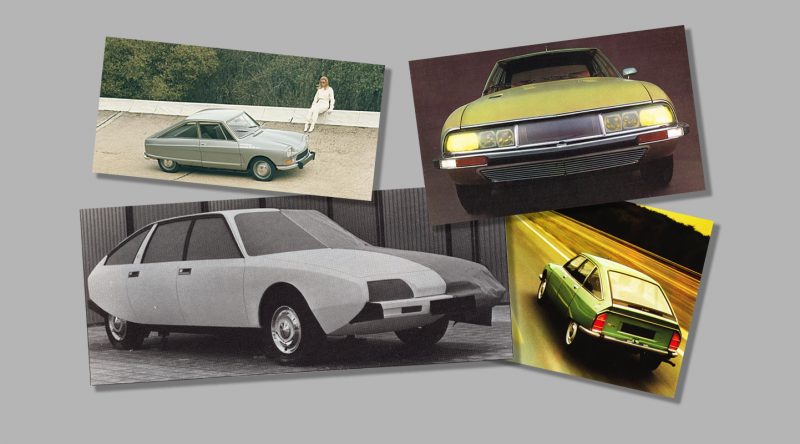
Simca lost its styling department in 1960, and Opron found work as a product designer until he found his natural home at Citroën. The fluid aerodynamic lines born from the Fulgar was instrumental in Citroën taking on the young designer, becoming the Head of Design. Citroën’s car line up at the time was typically idiosyncratic and limited to just three passenger car designs competing in two car sectors. Citroën embarked on a model program which was to see the brand expand to include a family car, a sports GT car and a replacement for the iconic DS. All three projects were headed by Opron and were to become his finest body of work, which not only upheld the brand’s reputation for innovation but also made its mark in automotive design history.
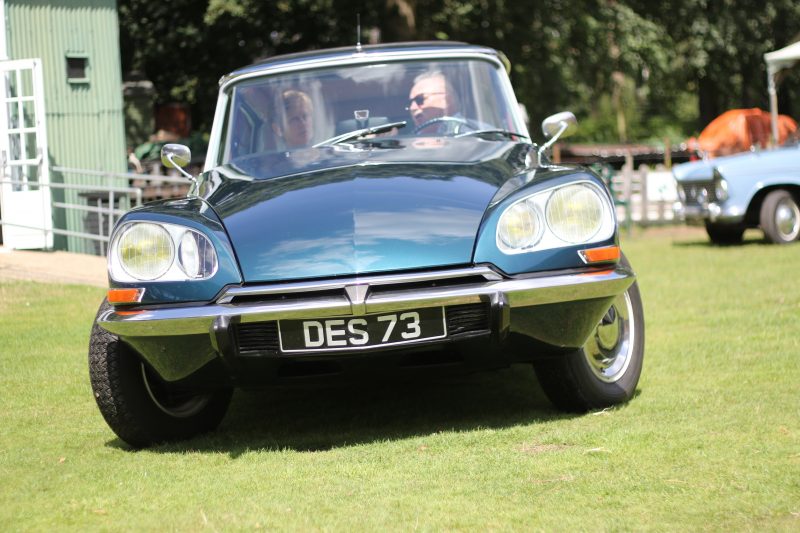
His first task was to give a new face to the Citroën DS, adding the famous ‘shark nose’ aerodynamics and incorporating the innovative directional headlamps that can see around corners. The results were a startlingly elegant transformation that injected life into the 12-year-old design to keep the DS in production for an additional 7 years.
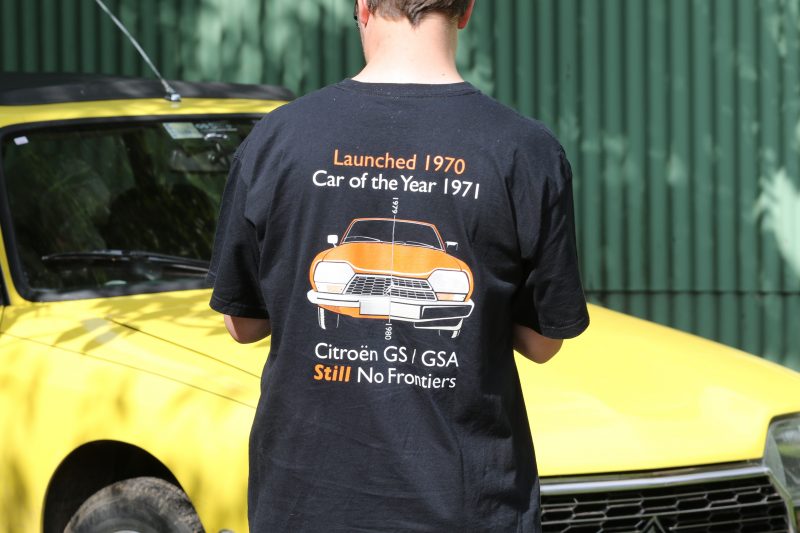
His next project was to create a style for a much-needed family car. A project that had started prior to Opron’s arrival at Citroën, started as the Project G, which had taken over the Bertoni Project F which had been awfully close to production but then suddenly dropped. This was to be one of the first signs of Citroëns troubling propensity for haemorrhaging cash. The Project F had more than a touch of the Renault 16 to it, triggering off a rumour about industrial espionage, but its demise is more likely due to internal politics within the company. Opron started work on Project G in 1967, becoming one of the first production cars to utilise computers to assist in the design. However, it is well reported that the main factor in its styling came via Pininfarina concepts for the BLMC 1100 and 1800. Always a contentious issue with Citroën archivists, who state that the concepts had no influence but the Kamm tail and rear glass area suggest otherwise and must have piqued Opron’s imagination.
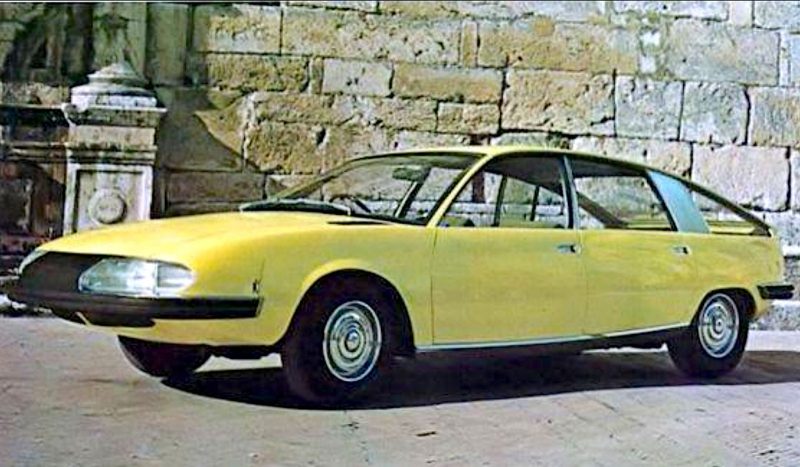
The use of computer at the early stage of the GS’s development would have played a significant role in the car’s aerodynamics, allowing basic drag co-efficient to be calculated using simulation model bucks. The large glasshouse area and a comparatively low nose with semi-enclosed rear wheels offered a remarkable wind-cheating shape that was not only a useful sales gimmick but more importantly cut down the fuel consumption and noise levels. This collaborative effort of a truly innovative design was rewarded with the European car of the year in 1971, striking a chord with the public. Visually the car was a delight, but it was equaled by its ride and road handling. The only form of criticism came from the small engines, regulated by the horsepower taxation laws governing France’s road users. Like the DS, the GS enjoyed a long production run, and even the updated GSA of 1980 resembled the 1970 original. When the GS’s eventual replacement arrived in 1983, the BX still couldn’t better the original GS’s drag co-efficiency factor.
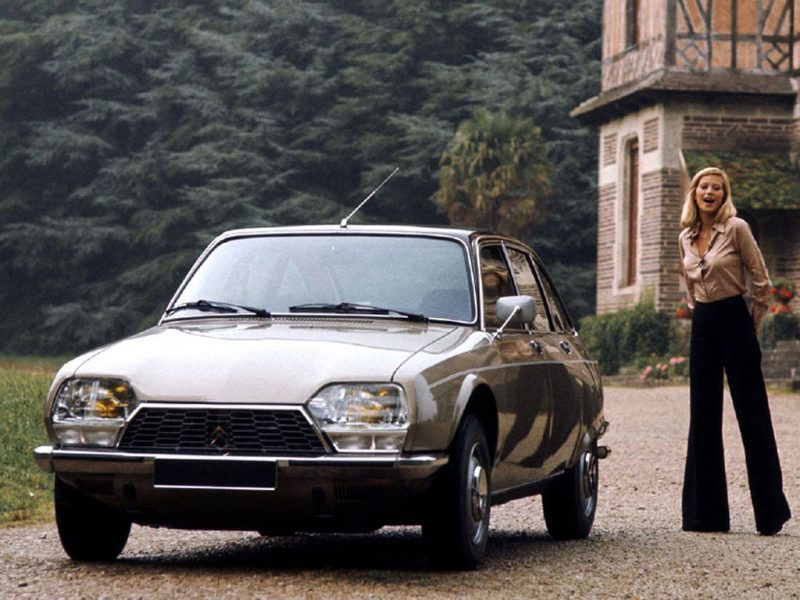
Never one to back down from a challenge, Opron and his team was asked to redesign the razor-edged Ami. Distinguished by its reverse raked rear window, the original design brief for the 1961 version was to provide a plusher and less rustic alternative to the 2CV. The public was not entirely convinced, and many turned to Renault products who were going through their own design revolution at the time. Opron’s task was to make the Ami’s styling more appealing and to guide the car upmarket away from its 2CV utilitarian roots. This is where skill and the ability to play with metal forms come in. Opron, as it turned out had a gift of crafting such a skill. Constrained by budget, which is often the main hurdle to restrict creativity, it can also provide a useful constraint for visionaries to work within a limited scope. Working from the front of the car, the bonnet and front end was simplified. By flattening the bulky contours and revising the flanks, the aesthetics were instantly improved, but the real feature was to implement a fastback body. The estate version of the original Ami had actually outsold the saloon version and eventually became one of France’s best selling cars. With this in mind, the proposed restyle for what was to become the Ami 8, used a smart long roof style while retaining the saloon rear door. The final metamorphosis of the Ami was guided by the installation of a bigger engine, which gave it a much-needed power boost.
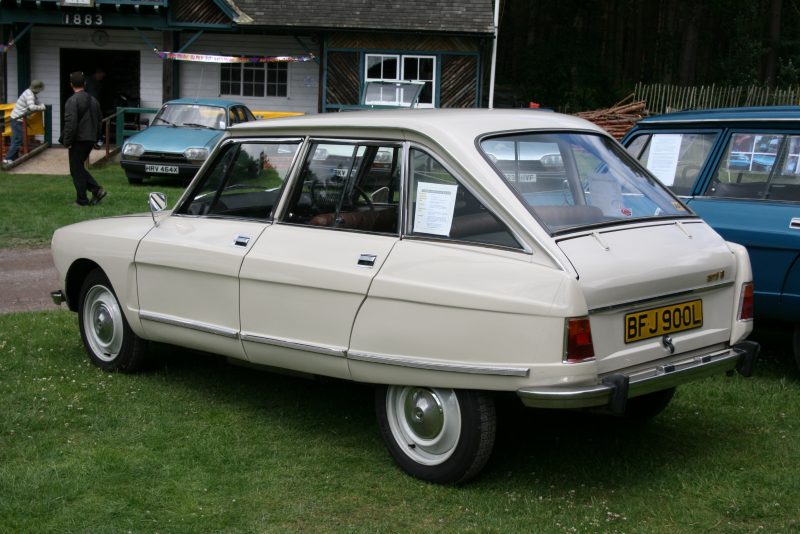
Having successfully resurrected the Ami’s fortunes, Opron was given the opportunity to participate in what was hoped to be an exciting new era for Citroën. The brand invested heavily into Rotary engines, with a vision that all future models would be powered by them. The rotary engine suited Citroën’s philosophy nicely. The engines were smooth, compact and could be made to be reliable given the right development. The first Citroën Rotary car was the M35, strictly a prototype but one that was sold to a select number of customers to evaluate its feasibility for production.
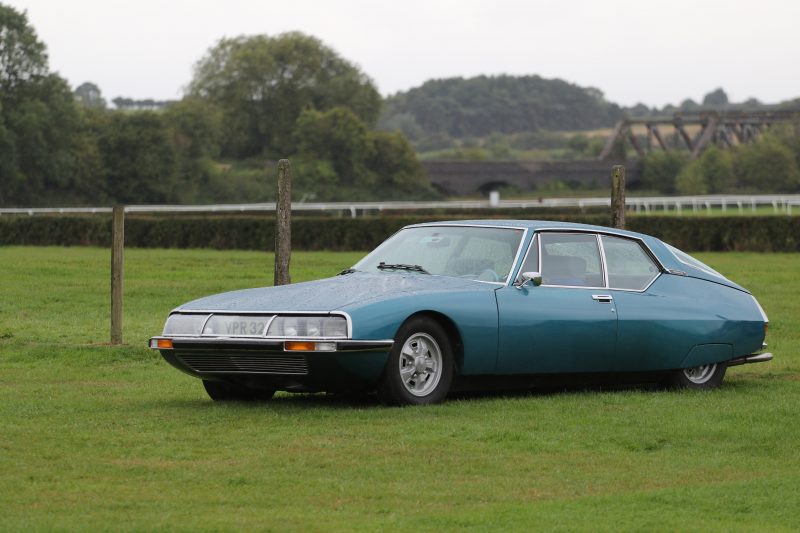
As the sixties progressed, Citroën’s ambitions appeared boundless and its confidence as manufacturer peaked with the announcement of a V6 powered GT car. Prior to Opron’s arrival at Citroën, the concept of a sports version of the DS had long been brewing, but Citroën’s acquisition of Maserati in 1968 provided the catalyst for using an existing Maserati engine in a fascinating combination with the Citroën hybrid pneumatic suspension system.
Opron’s approach to the design was comparatively unrestrained by the hard points and he may have gone back to his thought process originally envisaged on the Simca Fulgar concept, to produce what is in effect, a floating sculpture. The use of a dominant front overhang with a pronounced glass nose and the sweeping tapered dear drop design was quite unlike any car before or since. The side profile is broken up by the unexpected upward kink that houses the rear window, culminating in a large glasshouse hatchback. The combination of acute angles merging to the wide front curvature was seamless, particularly if you consider the lack of trim or metal folds below the waistline. The design shows confidence and still has an impact to this day. It proved to be Opron’s finest moment in a portfolio of riches.
However, it was all too obvious that Citroën was investigating rather too heavily on the wrong products in a time that was to become a volatile period for the car industry. As fuel rationing, global recession and industrial unrest were taking hold, Opron’s last design for Citroën was created under the realistic prospect of bankruptcy. Yet, the end result of his final car for the brand still instils the confidence and sweeping style that had now become Opron’s hallmark.
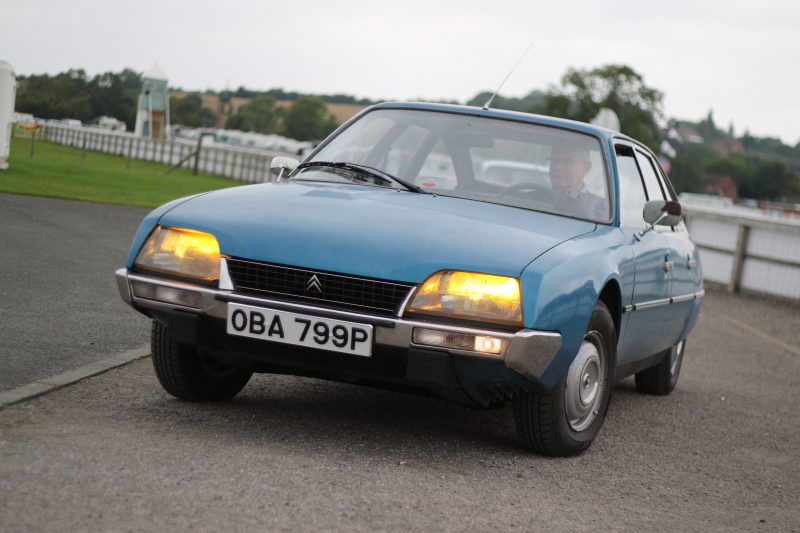
The GS had created much of the groundwork for the DS’s replacement and while the production of the troubled SM was underway, Opron looked at both of his latest creations to visualise the CX. Following the Bertone penned Citroën DS was not only a daunting task, but the economic and political climate of the period meant that Citroën was also losing money rapidly and it was clear that the SM had haemorrhaged much of the available budget for the development of the new executive car.
At the time, the CX was proposed to be powered by a rotary engine. The physical nature of the powerplant was an important aspect of the CX’s design. The car was designed to accommodate a smaller engine bay which allowed a shallower streamlined nose. As factories were preparing to build the rotaries, it was announced that the CX would axe the Rotary engine program and utilise standard combustion engines. Asides from the millions lost on investment of the Rotary engines, the shallow engine bay wouldn’t be able to accommodate bigger and more powerful engines and the car lost a vital opportunity to shift further upmarket.
Despite what was going on in the background, the car was launched in 1974 to a receptive motor industry, who commended the bravery of the design and presented Citroën with their second car of the year award of the decade. But the costs of buying Maserati, along with their losses from the rotary engine programme, as well as the lack of a supermini meant that Citroën was close to bankruptcy. As a result, the brand was taken over by the PSA Group on the eve of the release of the CX.
The Renault Era
It was under these circumstances that Opron was successfully coaxed away from Citroën, to work for arch-rivals Renault. This would create shockwaves within Citroën, which added to their woes of uncertainty. It’s no coincidence that Citroën’s stagnation and eventual dilution of the brand correlated with Renault’s successes.
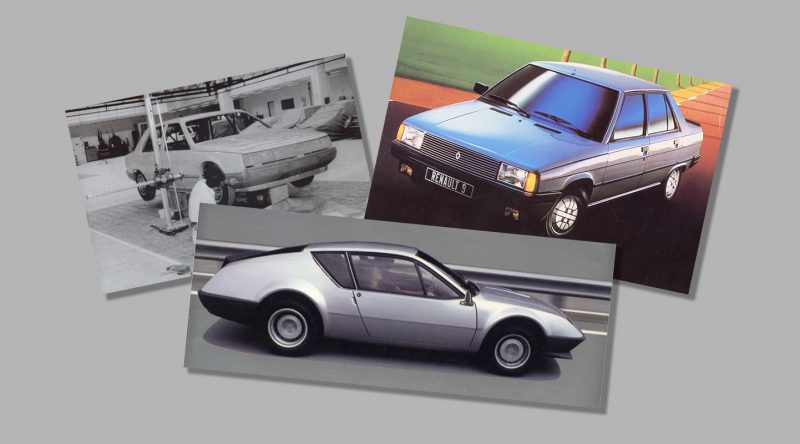
Opron’s first project was a typically high-profile design, the low volume but status enhancing A310 Alpine V6. The critical dimensions, powerplant and hardpoints had already been fixed, Opron’s task was another makeover to elevate the car into a higher standing. In many ways, joining Renault as a head designer was perfect for Opron who also had access to Alpine designers which eventually culminated in collaborative efforts for such groundbreaking designs such as the Matra Rancho and Renault Espace. The Alpine was made from fibreglass, which also meant an understanding of body forming. Unlike unitary steel cars, where gaps and panels could be used to create breakpoints on the body, the single-piece fibreglass body is treated more like a conventional piece of product design.
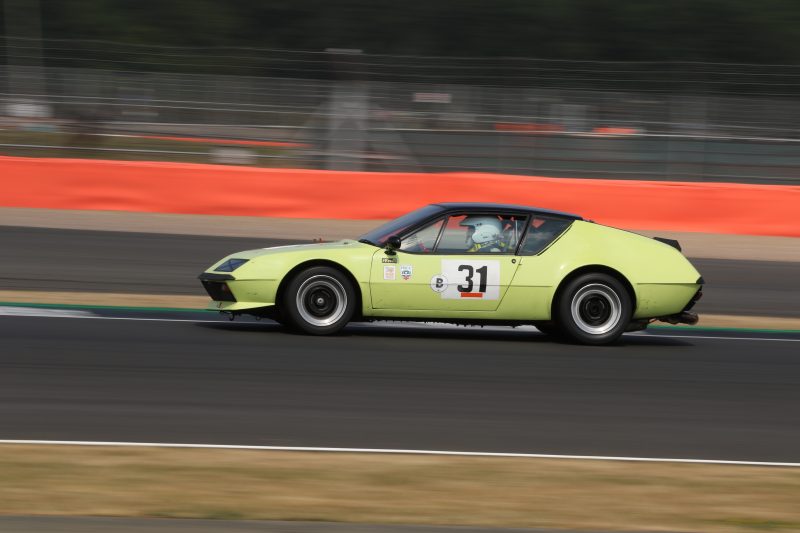
The original A310 lacked any meaningful power, so by installing the recently created V6 engine and by employing Opron’s design direction to give the car a muscular makeover, transformed a rather feeble machine into a potential Porsche competitor. The addition of rear and front spoilers, combined with bold plastic rear assembly beefed up the design. The addition of extended wheel arches and the simplification of the frontal treatment gave the car some much-needed aggression.
Finding himself in a settled, if slightly more conventional environment with Renault who were building a range of cars that may not have quite stirred the souls of its drivers, they were certainly selling in huge numbers across the world – this is something that Citroën could have never achieved. The progressions of designs, such as the Fuego, R9, R11 and R25 were not quite as groundbreaking as his Citroën work, but each car became volume sellers and offered a contemporary appeal that was well received by the public. Opron’s open ideas to external consultation, allowed designers and creatives from beyond the automotive field, such as furniture designers Mario Bellini, Marc Held and Terence Conran, cementing Opron’s desire to create industrial art.
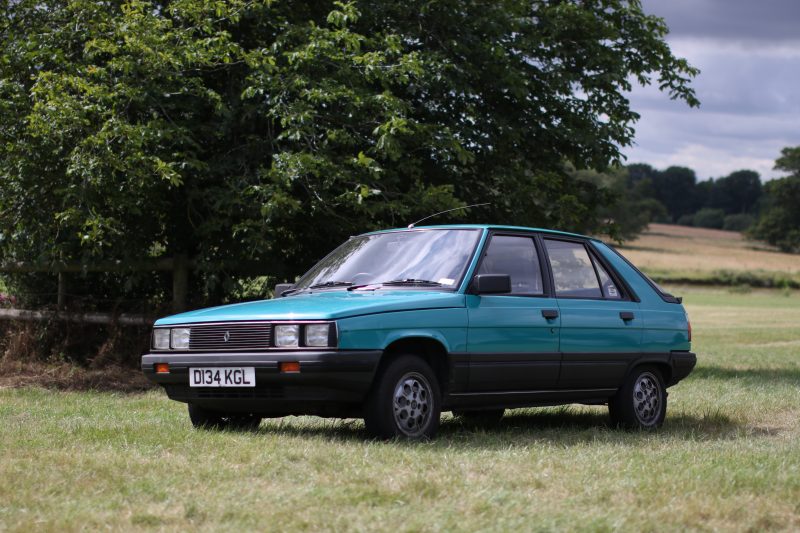
Opron left Renault in 1985, to join Fiat and to create one last flourish of his imagination. His team was one of three asked to design a proposal for a dynamic sports car – the Alfa Romeo SZ. He set up his own consultancy after six years with Fiat and continued to encourage designers under his wing to look at surface design as a theory and to consider new ways of aesthetics. His legacy has been cemented by his work for Citroën, which won him universal acclaim and adulation for its innovative grace. His approach to creating designs was not constrained by over-analytical research or technology constraints, which singles him out as the last of a breed, and his name will go down as one of the all-time greats in the era of the motor car.

